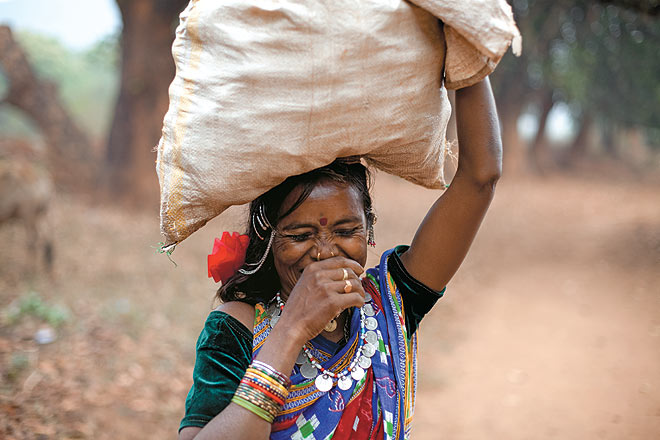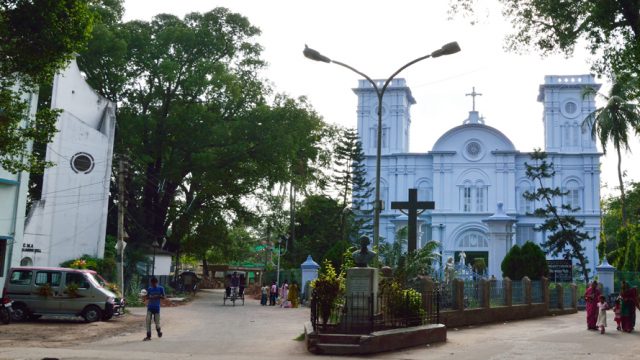Itachuna Rajbari, West Bengal The Dooars, West Bengal sizes="(max-width: 660px) 100vw, 660px" />
sizes="(max-width: 660px) 100vw, 660px" />
The traditional panchmohola (five-halled) mansion of the Itachuna warrior-protector family comprises a courthouse, dancing hall, kitchen wing, guest wing, and finally the innermost residential halls, the ondor-mohol where the ladies spent their whole life. The Kundu family traces its descent from Maratha warriors, the Kundans, who were deployed in this region to collect taxes—the dreaded borgi of Bengali nursery rhymes. In this case the attackers instead adopted the locality and locals for their own. A wing of the rajbari has in very recent years been turned into a heritage boutique hotel, and is a charming place to stay, with guided tours of the mansion and environs on request. Rooms are evocatively named for family relations and seniority, thus Chhoto Pishi, Ginni Maa, Boro Maa, Chhorda, with one in the outer courts called Bilash Manjari, and a set of rustic huts has just been constructed for a rural idyll.
A mere generation ago, the wilds of Gorumara and Jaldapara were the stuff of summer holiday adventure stories for children in and around Bengal. When travelling cross-country was not so easy, and the Sunderbans largely regarded as impenetrable and terrible jungle, it was here that wildlife enthusiasts flocked, where the rhinoceros roamed. The Dooars valley nestles between the Teesta and the Sankosh rivers, bordering Bhutan. Its natural forests and manmade tea terraces are sliced and spliced by the Raidhak, Torsha, Jaldhaka and other streams. Several sanctuaries occupy the Valley, including the Buxa Tiger Reserve, Manas Sanctuary, Mahananda and Chapramari. The East Himalayas Tourism Festival in winter is a good time to visit, with excursions to such intriguing places as Rajabhatkhawa (‘the king’s rice eating’), Phuentsholing and Totopara (‘the neighbourhood of the Toto tribe’).
Chinsurah, West Bengal
Things have come to a pretty pass when a former colonial power extends a helping hand to preserve the historic legacy of a small Indian town. But then, Raj or colonial tourism tends too often to focus on the relics of the British Empire alone. Yet, the former Dutch outpost of Chinsurah/Chuchura—along with Serampore, Chandernagore and Bandel, other colonial townships—have so much to see that is literally falling to bits, that we cannot but urge you to visit, and visit soon. There is, for example, the distinctive Dutch cemetery, with its ranks of obelisks rather than crucifixes. The town’s history predates the Dutch though, for it was founded by the Portuguese, who built the church of Mother Mary here, now declared a Basilica, the icon standing in it still brought over by sea. Things to see in and around include the Bandel Church, the Edwardian clock tower at Ghorir Mor (Clock Crossing), the Mahishmardini Temple and the Armenian Church, the Hooghly madrasah in the former Dutch barracks and Sandeshwari Temple with its brass lingam that tours the town on the eve of the Bengali new year, and just outside the municipal limits, the intriguing mausoleum of one Susana Anamaria, wife of Mr Yeats. And if you can find accommodation, aim to arrive for the massive Jagaddhatri and Kartik pujas, which outshine the festival of Durga in these parts—quite literally, with far more sound and light and fury and diversity of avatars. A quieter time to visit might be Manasa Puja, the hour of Bengal’s beloved snake goddess, or around the New Year, mid-April.

Daringbadi, Odisha
Not far from Berhampur, the mercury has been known to dip below zero, up in Kandhamal. Who knew a coastal state could compete with Kashmir? At 915m above sea level, though, Daringbadi has pine forests and plantations of coffee, pepper, turmeric, the waterfalls of Putudi and the Doludi River, and the Belghar sanctuary, home to wild tuskers and the Nakate tribe. The hot springs of Taptapani are not too far from here, if the chill gets too much for your lazy bones.

Tribal Tour, Odisha
Bondo, Didayi, Koya and Kondh, these are just some of the cultural encounters promised by a tribe-centric tour of Orissa, home to 62 different tribes, making up nearly 30% of its population. Visit the weekly haat at Mundiguda in Malkangiri, where the Bondo and Didayi people come to trade; they also gather on Thursdays at Onkuddelli along with Gadaba, near Jeypore, which is a good base to find the Paroja village of Litiput. And a potters hamlet as well. On Fridays, the Parejas and Malis come to market at Kundli. Not far from Mundigunda, in Gupteswara, you will find members of the Dhuruba tribe. Further on in Koraput, near Machhakund, look for the villages of Gotalpara and Durai, where the Barogadaba make their homes—their hunting festival, replete with mohua liquor and rice beer and Dhemsa dancing, takes place in March/April. The settlements of the Kondhs are near Rayagada, on the Niyamgiri Hill; also nearby are the Lanjia Saora villages and towards Bissam Cuttack the Desia Kondh market (Tuesday) and crafts settlement. The Dongaria Kondh can be found at the Wednesday market at Chatikona. Nip over into neighbouring Chhattisgarh to feast your eyes on the Chitrakoot Falls on the Indravati River, a fine footnote to your itinerary.

Sher Shah Suri’s Tomb, Sasaram, Bihar
One of the most inspirational heroes of India gets not much time on national propaganda pages. The Pathan emperor who rousted the Mughals died, of all things, in an accidental gunpowder explosion. His name is less repeated than Humayun, whom he unseated in Delhi, yet he is the man behind the great Grand Trunk Road, the originator of a postal service in India and we owe him the name of the rupaiyah. But his tomb alone is worth the trip out to Sasaram, though given its Indo-Afghan aesthetic, the ‘second Taj Mahal’ tag feels rather insulting. The red sandstone mausoleum stands in an artificial tank, completed soon after Sher Shah’s death though begun some five years ago! The coloured glazed tiles that once decorated the ancillar y domes surrounding the main one over the octagon and also the chhatris at each of four corners have fallen off, alas.

Saraikela, Jharkhand
This sleepy hamlet on the banks of the Kharkai River is the one of the homes of the martial Chhau dance (the others being Purulia and Mayurbhanj). Once a male preserve only, the government-run dance centre here has in particular opened its doors to women as well and draws international students as well. Dance is not the only spectacle on offer—this is also a centre for the crafting of the elaborate Chhau masks, which make a worthy souvenir and a conversation piece in your living room. A good time to visit is during the Chaitra Parva spring festivities and the Magha festival in winter. While there, eat the local laddoo and visit the Raja’s palace and Kudarsai temple.
Daringbadi
Dooars
Itachuna Rajbari



